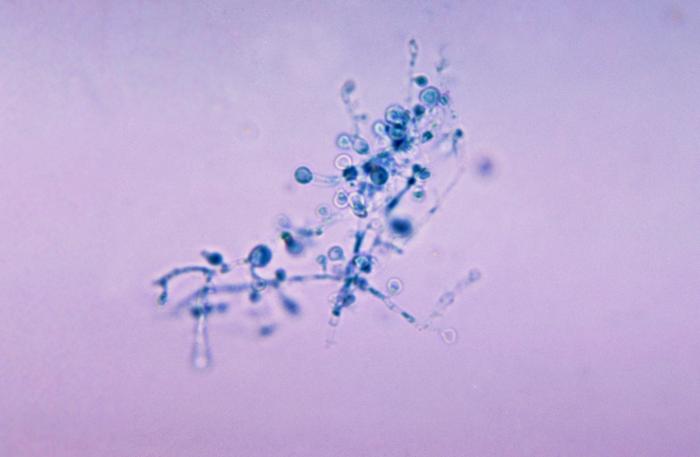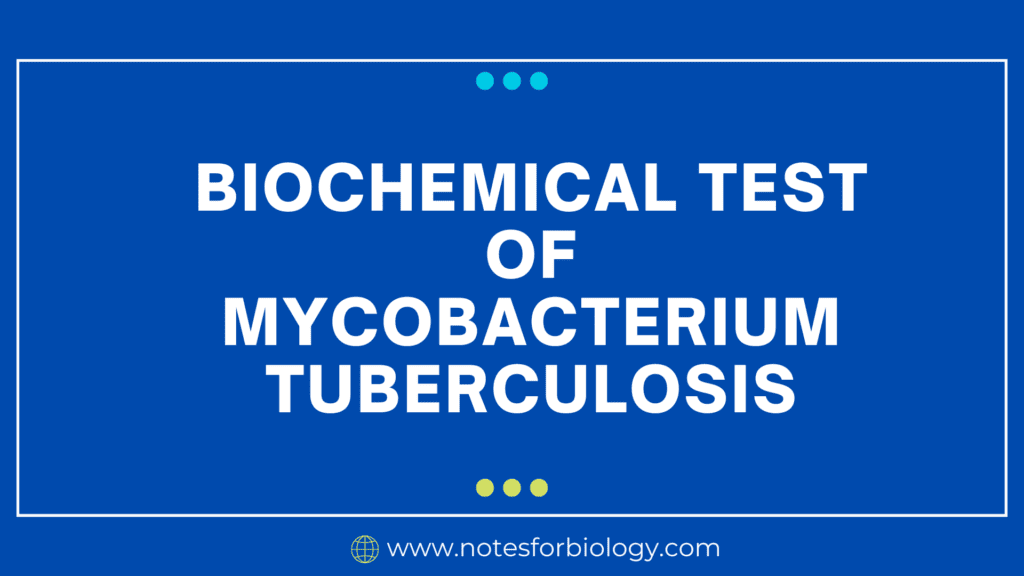Blastomyces dermatitidis is the cause of blastomycosis, a systemic pyogranulomatous illness that mostly affects the lungs but can also spread to the skin, bones, and central nervous system. The dimorphic fungus Blastomyces dermatitidis grows as a yeast at 37°C and as a mycelial form at room temperature. Although not much is known about these species, they most likely exist in warm, damp soil in forested areas that are abundant in organic waste.
Table of Contents
Blastomyces dermatitidis

Characteristics
Dimorphic Nature
- Environmental (Mycelial) Form: Blastomyces dermatitidis is found in the environment as a mold that secretes conidia, or spores, through hyphae.
- Pathogenic (Yeast) Form: The spores transform into a pathogenic yeast form when they are breathed by a warm-blooded host.
Morphology
- Hyphae produce round to oval conidia in the mycelial form.
- Yeast Form: Typically measuring 8 to 15 micrometers in diameter, the yeast cells are broad, big budding cells.
Epidemiology
- Geographic Distribution: Blastomyces dermatitidis is found in many areas of North America, especially the Great Lakes region, the Ohio and Mississippi River valleys, and the southeast of the country. It can also be found in several regions of India and Africa.
- Reservoir: The fungus grows best in damp soil that has begun to decompose organic materials like wood and leaves.
Transmission
- Main Route: Airborne conidia from organic debris or disturbed soil are inhaled.
- Secondary Transmission: Transmission from person to person is incredibly uncommon. Most infections don’t spread easily.
Pathogenesis
- Inhalation: When spores are inhaled, they enter the lungs’ alveoli.
- Transition: At body temperature, spores change into yeast.
- Immune Response: When the immune system reacts, granulomas are frequently formed.
- Dissemination: The yeast can cause disseminated blastomycosis by traveling through the bloodstream to different body areas.
Clinical Manifestations
Pulmonary Blastomycosis
- Pneumonia can present with mild symptoms or severe ones.
- Coughing, fever, chest discomfort, and dyspnea are typical symptoms.
Disseminated Blastomycosis
- Can have an impact on the central nervous system, genitourinary system, skin, and bones.
- Skin lesions are frequently verrucous or ulcerative.
- Osteomyelitis can arise due to bone involvement.
- Meningitis and brain abscesses can result from CNS involvement.
Diagnosis
- Microscopic Examination: Employing methods such as KOH preparation or histopathology with specific stains (e.g., PAS, GMS), one can detect broad-based budding yeast in clinical specimens.
- Culture: The development of the organism on suitable fungal media from clinical specimens (sputum, bronchoalveolar lavage, tissue biopsies).
- Testing for Blastomyces antigens in blood, urine, or other bodily fluids is known as antigen detection.
- Serology: The detection of antibodies against Blastomyces; however, because of its inconsistent sensitivity and specificity, it is not as widely utilized.
Treatment
- Mild to Moderate Disease: In the majority of pulmonary blastomycosis cases, itraconazole is the initial line of treatment.
- Severe or CNS Involvement: Amphotericin B is advised in instances that are severe, life-threatening, or involve the central nervous system. Once the patient stabilizes, oral itraconazole should be administered.
- Treatment lasts anywhere from six to twelve months, depending on the infection’s location and degree.
Prevention
- Environmental Precautions: One way to lower the risk of exposure is to steer clear of activities that disrupt the soil in endemic areas.
- Wearing masks and protective clothes during operations that involve disturbing the soil in endemic areas is known as personal protective equipment, or PPE.
Summary
An important fungal infection with a unique geographic distribution, Blastomyces dermatitidis mostly affects people in endemic areas by spore inhalation. It can result in a variety of illnesses, ranging from minor respiratory infections to serious systemic illness. Microscopy, culture, and antigen detection are used in the diagnosis process. Antifungal drugs like itraconazole or amphotericin B are often used in treatment. Reducing exposure to the fungus’s environmental sources is the main goal of preventive interventions.
A dangerous infection that has the potential to be fatal is blastomycosis dermatitidis . It is essential to comprehend its epidemiology, clinical symptoms, diagnosis, and therapy in order to improve patient outcomes and intervene promptly. Reducing exposure and lowering the risk of infection need the implementation of preventative measures.
Frequent Asked Question(FAQ)
Define blastomycosis dermatitidis?
Blastomyces dermatitidis is the cause of blastomycosis, a systemic pyogranulomatous illness that mostly affects the lungs but can also spread to the skin, bones, and central nervous system.
What are the characteristics of Blastomyces dermatitidis culture?
Dimorphic fungus that can grow in the environment or at 25°C as mold, or it can grow in human tissue or at 37°C as yeast.
What is the clinical presentation of Blastomyces dermatitidis?
The typical presentation of blastomycosis is a self-limited flu-like disease accompanied by fever, chills, myalgia, headache, and productive cough.
What is Blastomyces dermatitidis also known as?
The Ohio and Mississippi River basins, as well as the Great Lakes region, are home to the endemic species Blastomyces dermatitidis, often known as North American blastomycosis, Gilchrist’s illness, or Chicago disease.
Related Article




